GEI's Memory
- GEI main dates
- INSA’s 50 year book, former GEI students’ portraits
- Department history
GEI Main dates
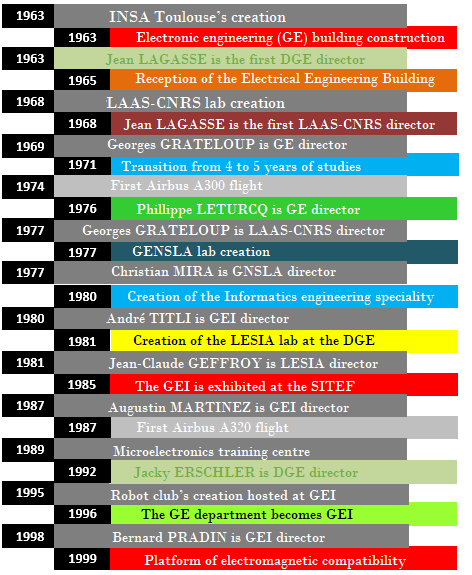
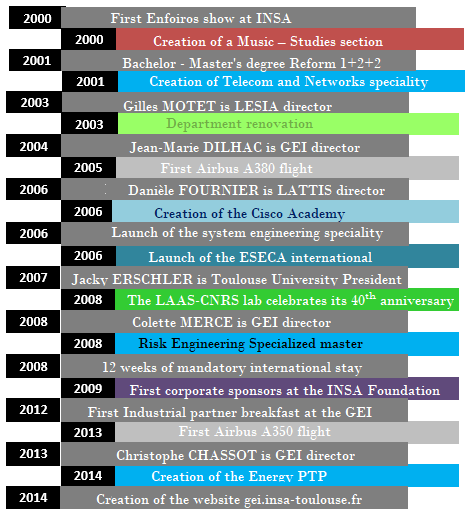
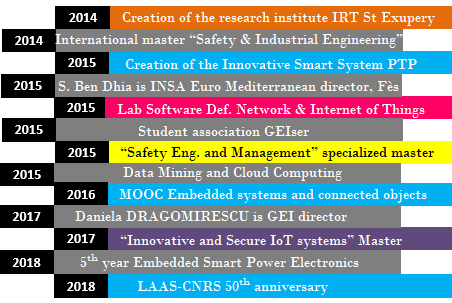
INSA’s 50 year book, former GEI students’ portraits
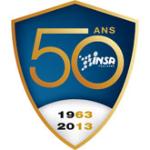
|
Automatics – Electronics 1991 |
Automatics – Electronics 1996 |
Automatics – Electronics 1973 |
Informatics 2001 |
|
Automatics – Electronics 1971 |
Informatics, 1992 |
Informatics, 1998 |
Automatics – Electronics 1984 |
|
Master Risk Engineering 2009 |
Networks and Telecoms, 2006 |
Informatics 2001 |
Informatics 2002 |
Department history
The department directors
Since 1963, 11 directors succeeded one another at the head of the Department of Computer and Electrical Engineering.
La création du Département, directeur Jean Lagasse (1963)
The department creation, director Jean LAGASSE (1963)
The GEI department construction starts in 1963, the building is delivered in 1965. The picture of one of the 5 groups of the first 100-student year group of the INSA Toulouse was shot near to the STPI, with, at the back, the view of Pech David hills. The studies’ duration was four years. The department director, Jean LAGASSE, founds in 1968 the LAAS-CNRS lab.
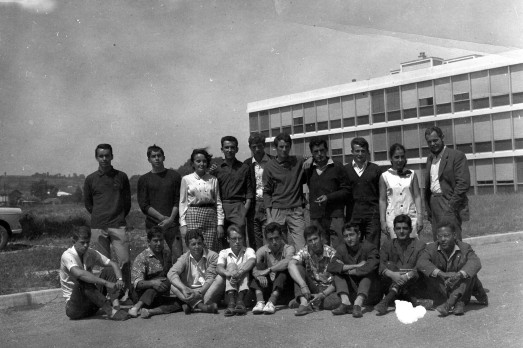
The teleprinter is an electric typewriter which allows to broadcast and receive information by a power line (modem). The permeameter iliovici (1962) is a measuring tool for magnetic permeability of sheet steel samples as a function of magnetic field or magnetizing force. These tools are saved as part of the PATSTEC mission, which realises the contemporary instrumental heritage stocktake of Computer and Electrical Engineering Department. The materials are preserved at the “Maison de Recherche et Valorisation” of Toulouse University.
The department, director Georges GRATELOUP (1969)
Studies go from 4 to 5 years in 1971.
The department, director Philippe LETIURCQ
In 1977, the study group of applications and non-linear system (GESNLA) is created at the GEI, on Christian MIRA’s initiative. Two other groups are created: Automatics and industrial robotics group (GARI), on Pierre LOPEZ’s initiative, and the GERII (Study and research group in industrial informatics) on Jean-Claude GEFFROY’s initiative. The GESNLA is displayed on the internet using the HTML language.
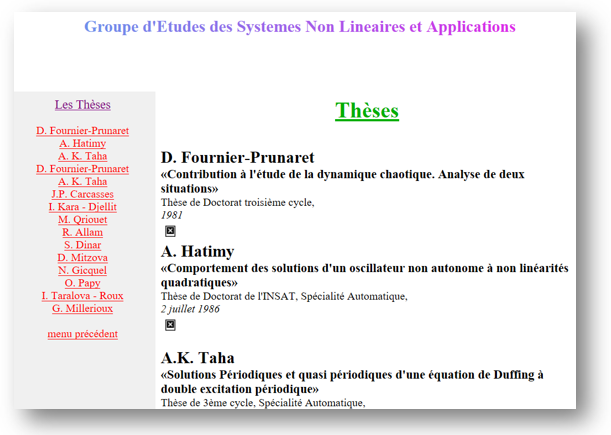
The informatics speciality is created in 1980. The GEI and LAAS-CNRS are exposed at the “Salon International des Technologies du Futur de Toulouse” (SITEF). Below, a “24 hours of the INSA” picture, a bicycle race in which the GEI has participated regularly.

The department, director Augustin MARTINEZ (1987)
The Toulouse micro-electronic training centre (PFMT) is created, gathering the 5th year students of INSA, ENSEEIHT, ENAC, SupAéro and Paul Sabatier University, it is managed by Jean-Louis NOULLET. The LESIA lab is created in 1990, on the basis of GESNLA, GARI and GERII, its first director is Jean-Claude GEFFROY. In its creation, the LESIA counts 26 members (9 lecturers and researchers, 4 postdoctoral researchers and 15 PhD students). Not all PhD students are grant holders and not all the postdoctoral receive funding. The technical means are often the same as those of teaching. Personal computers start to grow.
The department, director Jacky ERSCHLER (1992)
LESIA develops international relations, particularly with the Institute of Mathematics of Academy of Sciences of Ukrain (Kiev) (Yuri Maistrenko), Urbino University - Italy (Prof. Laura Gardini), California Santa Cruz University (Prof. Abraham), University of Princeton (New Jersey) (Prof. Y. Kevrekedis), Tokushima University - Japan (Pr. H. Kawakami) ou encore l'Université de Berkeley (Prof. L. Chua).
Renovation works of the department are undertaken. Important works also start on the INSA campus with the restaurant restructuring, the Promologis residence building up, as well as the Bib’INSA and the creation of the IT department which gathers and pools functions that were formerly spread into the departments. The international is becoming more and more important, with the creation of the international relations service and the systematisation of the internships abroad.
Regarding the GEI department:
- The LESIA lab grows at the heart of the department. In 1993, Etienne SICARD creates the Study and research group in micro-electronics (GERME), from GERII. LESIA outlines in two groups (dynamic systems SYD, Security of Systems Operation SFS). He was recognized as a host team in 1995 (EA1687). Since this date, assessment scientific committees take place every two years, underlining the lab positive evolution.
- J.L. NOULLET installs the first Computer network within the department, B. SALVAGNAC introduces the web.
- A new telecom networks orientation within the AEI speciality, precursor of the telecom networks orientation is created.
- The GEI becomes the DGEI, informatics “I” having developed since the early 80s’ with the creation of informatics speciality and the LESIA. At the beginning of his second mandate, in 1995, a deputy director function is created. Bernard PRADIN is named at this function.
At the international level, the contractualisation of the institutions and research is implemented as well as the national assessment authority. The INSA, which became in 1990, Scientific, Cultural and Professional public institution (EPSCP), as the universities and INP, participates, alongside these establishments, at the development of a university site policy (European university hub of Toulouse)
B. PRADIN (on the left), C. MERCE, secretary to the director and J. ERSCHLER (on the right) in 1999
The department, director Bernard PRADIN (1998)
With the help of two successive deputy directors, Germain Garcia and then Colette Mercé, the GEI experienced a period rich in pedagogical events:
- Creation of a new specialty in Networks and Telecommunications opened in October 2001.
- Implementation of the 1 + 2 + 2 reform involving the department in 2 pre-orientations.
- Establishment of common guidelines for the 5th year with other departments: microsystems with Department of Physical Engineering and process automation with Department of Process Engineering.
- Assertion of the computer component of the department by creating a section 27 of the National Council of Universities (CNU). The INSA Toulouse is ranked in 2002 at the top of the engineering schools with integrated prep with computer training, a survey "Letter from the Student" - "01 Informatic".
- From an organizational perspective, streamlining the organization of the year into six 5-week modules and 1.25-hour increments for more managerial flexibility. This organisation will later be adopted by the INSA as a whole.
- Introduction of new teaching approaches: projects and tutored présentations
A Platform of component Electromagnetic Compatibility is hosted at the GEI with a strong support by the industrialist of the region. The robot club is created in 1999 and receive a locale at the GEI. The first Enfoiros show, created by three GEI’s students, with Vincent NICOMETTE participation (until 2008) is given in 2000. It will then extend to the whole INSA. The INSA Music section is created by V. GROS and E. SICARD. As part of the Ministry of Foreign affairs, a cooperation has been set up in the field of pedagogical engineering with new engineering schools in Morocco: Agadir’s ENSA, Marrakesh’s ENSA, Safi’s ENSA and Khouribga’s ENSA.
Upon the electrical compliance, the department has been entirely renovated in 2002.
The department, Director Jean-Marie DILHAC (2004)
Jean-Marie DILHAC, electronics professor, is named DGEI director the 1st July 2004, by Louis CASTEX, INSA director. Marie-José HUGUET, lecturer in informatics, assists him as deputy director.
- The new director is immediately engaged in the creation of a new engineering training….in Castres, which, after a lot of difficulties sees the light of day as ISIS (Informatics and information systems for health) within University Training and Research Centre Jean-François CHAMPOLLION
- The beginning of his mandate goes along with the recruitment of Thierry ROCACHER, Martin AIME and Gwendoline LE CORRE, in 2004. François POMPIGNAC retires at the end of 2004, while our young retired Alexandre DZIADOWIEC dies. At INSA, and so at GEI, job record writing procedures are implemented as well as engineers, technicians and administrative annual assessment interviews. Exhibition showcases are created.
- In terms of pedagogy, the project-based learning (APP) takes off at school and at the GEI, especially under the leadership of Daniel MARRE, a lecturer in computer science.
- On Louis CASTEX’s initiative, double degree agreements are formalised with the “Ecole supérieure de commerce de Toulouse” (today Toulouse Business school) and the Companies Administration institute: they will have a large success to the GEI students.
- Pedagogical intranet takes its first steps, following the LMD reform (known at INSA as 1+2+2), the three department third years disappear (Informatics, Automatics Electronics Informatics, Networks and telecommunications). Only the 4th and 5th years remain under the responsibility of GEI. Corollary, pre-orientations are created, especially MIC and IMACS.
- In 2005, AEI becomes AE and loses its “I”. The informatics speciality becomes ‘’I’’ and loses its “G” (previously entitled as Informatics engineering. André TITLI, Jean-Claude GEFFROY and Etienne DELORD retire.
- Thanks to Terlys MARINO’s action, the department old scientific instruments are inventoried by the PRES heritage cell.
- At the beginning of 2006, Pascale MATHIEU, executive secretary for a long time, leaves the DGEI for another assignment. Daniel MARRE becomes GEI studies director.
- The DGEI director participates at the creation of the Pasc@line association (he proposed the name), association which gathers engineering schools and Syntec informatics, whose objective is the promotion of higher education in computer science to high school students and students, especially young girls!
- Louis CASTEX announces his will, in 2007, to no longer have at INSA labs whose workforce is less than a hundred people. The LESIA gathers with IUT Blagnac researchers to found the LATTIS.
LATTIS lab in 2007 in front of the GEI (Director : D. FOURNIER)
- 2005/2006 is a successful period in terms of recruitments: Ernesto EXPOSITO (networks), Didier LE BOTLAN (informatics) Guillaume AURIOL (system engineering), and Elodie CHANTERY (automatics). Pierre DAUCHEZ (robotics) is promoted to professor. Guillaume AURIOL will mainly work on the GSI speciality, which is co-managed with the GEI and the GM.
- In 2006, the accreditation of prior experiential learning (APEL) is implemented to acquire the INSA diploma provided that they have acquired the corresponding skills in professional life or through further training at school, in an adjusted context. The Networks and Telecommunications specialty will be the second specialty of the school to be open to this new channel of social promotion through continuing education. Also start at DGEI the Spring Semester in Electrical Engineering especially for American students, coordinated by Etienne SICARD, and the preparation for the CISCO Academy certification, led by Thierry MONTEIL. Professor André TITLI, former director of DGEI, is retiring in July. December 2006: creation of the PRES University of Toulouse. Jacques ERSCHLER, professor at the DGEI, will be the first president.
- July 2007 sees Jean-Marie DILHAC’s mandate extension at the GEI direction, with Daniel MARRE as the studies director. Pierre DAUCHEZ, GEI professor and former INSA International relations director, is seconded at the Tokyo’s French embassy. Claude BARON is promoted to professor, Pierre-Emmanuel HLADIK and Christophe ESCRIBA are hired as lecturers, Fabien NOUGAROLLES as study engineer.
- Jean-Marie DILHAC is named CIES Midi-Pyrénées director the 1st February 2008. He animates his last GEI general assembly le 18th January.
Complete text: click here
The department, director Colette MERCE (2008)
From February 2008 to August 2013, the GEI direction was ensure by Colette MERCE. Christophe CHASSOT was deputy director and Marie-Véronique LE LANN was in charge of industrial relations and communication.
This period was marked by the restructuring of the existing specialities:
- The merger of the two specialities Informatics and Telecom-Networks creating only one speciality Informatics and Networks (IR) structured in a 4th year around a core curriculum and two orientations Informatics and Telecom-Networks.
- Induction of the Industrial systems engineering speciality in the Automatics and Electronics (AE) one for the IMACS pre-orientation students. The 4th AE year is, at that time, structured around a core curriculum and two orientations: Embedded systems and system engineering (shared with the mechanic engineering speciality students)
- Set of majors-minors targeted business implementation in the 5th year, facilitating the students intermingling from different specialities and a better adaptation to the needs of industry and research. Four majors are set up (Electronics and embedded systems, critical embedded systems, software engineering, communicating distributed systems) completed by six minors (Communication Sensors, Advanced Automatics, Model Engineering, Business Intelligence, Security, Mobile Applications and Ambient Networks).
- As part of the Multidisciplinary Transverse courses (PTP) development, set up within the establishment, participation to the development of the PTP energy and PTP risk engineering (which will become, later the risk engineering international master)
These restructurings, approved in May 2010, by the department council, widened to the industrialists choose thanks to their skills in their filed concerned, have been empowered by the CTI (establishment empowered for 6 years)
2010 open days (V. MAHOUT doing an automatic demonstration)
Pedagogically we can also list:
- The implementation of a half-day “internship forum” where the 5th year students introduce to the 4th year students and to the department personnel, in the form of synthetic posters, the 4th year internship that they just did.
- First “DGEI breakfast” during which students meet the department partner industrialists around coffee and pastries.
- Implementation into the 4th year programs of a research awareness unit with training in documentary research
- Free access for students to the department practical work rooms (first computer rooms, then electronics and automatic rooms)
- The equipment of the practical work rooms with video projectors.
- Creation of a professorial chair “Critical embedded systems” in partnership with ISAE, l’INP/ENSEEIHT, and Toulouse industrialists in the field.
- Launch of the Electronics Systems for Embedded Applications ESECA international master, INP/ENSEEIHT’s initiative.
In order to facilitate the provisional management of department services and the declaration of additional hours, the SEPIA software is developed with the CSN’s help. Initially meant for the GEID, the software will be, later, used by the whole INSA.
The LATTIS research lab (previously LESIA) stops doing its research activities at the GEI in 2010, several researchers join the LAAS-CNRS. Regarding the INSA, the obtaining of the engineering degree is determined by a 12 weeks abroad minimum stay and a 750 score at the TOEIC exam. The first companies become INSA foundation partners, some of them are close to the GEI themes.
The department, director Christophe CHASSOT (2013)
Multidisciplinary Transverse courses (PTP) is launched by P. TOUNSI, GEI teacher. The “safety industrial engineering” international master is launched by G.MOTET, GEI teacher in 2014. In 2015, “Data mining” and the “cloud computing” minors start. The “risk engineering” specialized master is rebuilt as “Safety engineering and management”. The GEIser student association is found in 2015, with Yorrick BARNAY as first president. Sonia BEN DHIA, GEI lecturer and LAAS-CNRS researcher, is named as INSA-Euroméditerranée director at Fès, Morocco, for a three-year mandate.

